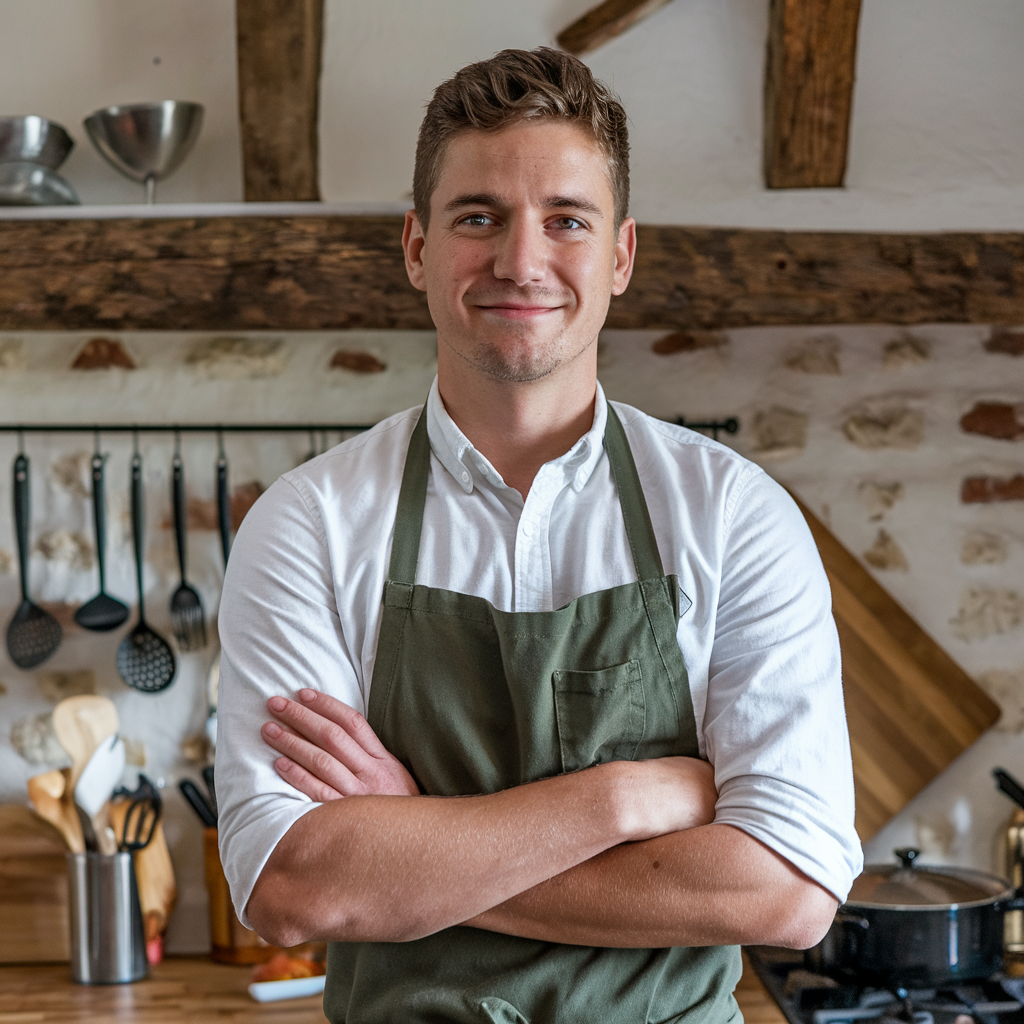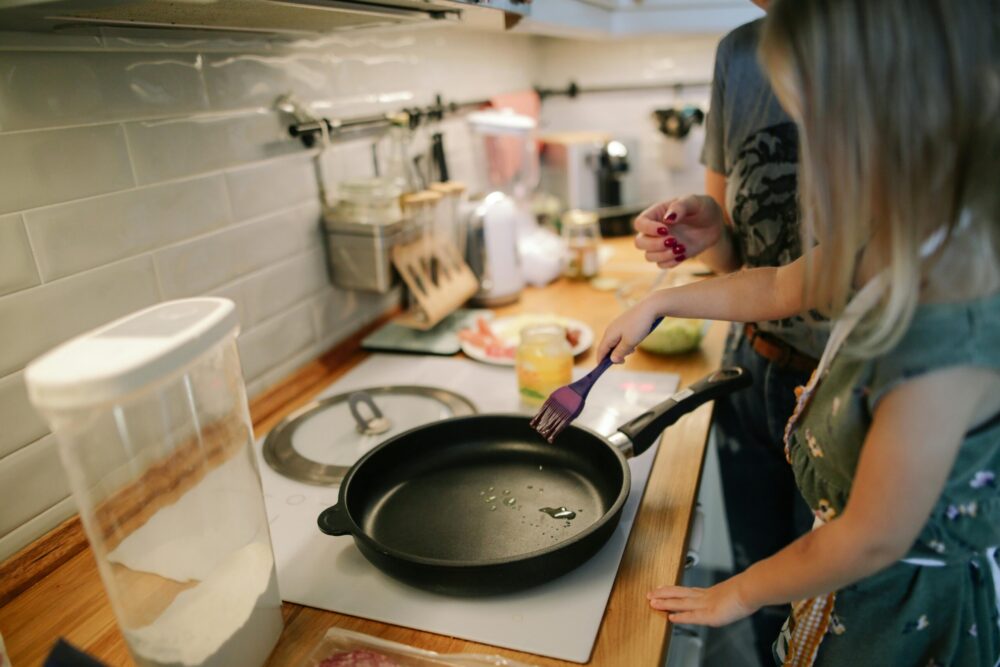Cooking with kids is more than just a fun activity—it’s an opportunity to teach essential life skills, build confidence, and foster creativity. However, introducing children to the kitchen comes with its own set of challenges, especially when it comes to ensuring their safety. The good news is that there are countless educational tools, apps, books, and courses designed to make learning both engaging and safe.
In this guide, we’ll explore the best resources for teaching kids about recipes and kitchen safety. From using tools like a slice safety knife to teaching hygiene with colored cutting boards food safety, and emphasizing cooker safety rules, these resources will help you raise little chefs while keeping them safe.
Why Teach Kids to Cook?
Teaching kids to cook has many benefits, including:
- Life Skills: Cooking equips children with essential skills they’ll use throughout their lives.
- Confidence: Successfully preparing a dish fosters a sense of accomplishment.
- Family Bonding: Cooking together strengthens family connections.
- Healthier Choices: Kids who cook are more likely to understand nutrition and make healthy food choices.
- Creativity: Experimenting with recipes allows kids to express themselves in new ways.
1. Apps for Teaching Kids Cooking and Kitchen Safety
Apps are an interactive and accessible way to teach children about cooking and safety. These digital tools often combine games, videos, and step-by-step instructions to keep kids engaged.
Recommended Apps
- Toca Kitchen 2: A fun app that lets kids experiment with ingredients, teaching them about food combinations and preparation techniques.
- Kid Chef: Provides simple recipes and instructions tailored to children while emphasizing basic safety tips like handling knives and avoiding burns.
- SuperCook: A recipe app that allows kids to input available ingredients and discover recipes, encouraging them to reduce food waste and be creative.
Benefits of Using Apps
- Interactive lessons make learning fun and memorable.
- Videos demonstrate safe practices, such as knife skills or proper stove use.
- Many apps include timers and alerts to teach time management in cooking.
2. Essential Kitchen Tools for Kids
The right tools make cooking safe and enjoyable for children. Here are a few must-haves for teaching kids how to cook safely:
Slice Safety Knife
A slice safety knife is specifically designed for children. These knives are sharp enough to cut soft foods like fruits and vegetables but are made with safety in mind to prevent accidents.
- Recommended Brands: Opinel Le Petit Chef Knife Set, Kinderkitchen Knives.
- Benefits: Helps kids build confidence with cutting while minimizing risks.
- Tips: Start with soft foods like bananas or cucumbers before moving to harder items.
Colored Cutting Boards Food Safety
Using colored cutting boards food safety is an excellent way to teach kids about hygiene and avoiding cross-contamination.
- Color Coding Tips:
- Red: Raw meats.
- Green: Fruits and vegetables.
- Blue: Fish and seafood.
- Yellow: Cooked foods.
- White: Dairy or bread.
- Benefits: Kids learn to associate colors with specific tasks, reinforcing food safety rules.
Other Must-Have Tools
- Heat-Resistant Gloves: Protect little hands when handling hot dishes.
- Kid-Sized Utensils: Smaller tools make it easier for children to handle cooking tasks.
- Non-Slip Mixing Bowls: Prevent spills and make stirring safer.
3. Books That Teach Cooking and Kitchen Safety
Books provide an excellent way for kids to learn about cooking and safety in a fun and engaging format. Here are some top picks:
Recommended Books
- “The Complete Cookbook for Young Chefs” by America’s Test Kitchen Kids: A comprehensive guide with kid-friendly recipes and safety tips.
- “Cooking Class: 57 Fun Recipes Kids Will Love to Make (and Eat!)” by Deanna F. Cook: Includes step-by-step instructions and visuals for young chefs.
- “Start Smart: Cooking Safety for Kids” by Sharon Draznin: Focuses on teaching safety rules, including cooker safety rules, hygiene, and safe food handling.
Why Books Are Effective
- Step-by-step visuals make instructions easy to follow.
- Stories and activities engage kids while teaching them essential lessons.
- Recipes are often designed to be simple and safe, perfect for little hands.
4. Online Courses for Kids’ Cooking and Safety
For families who want a structured learning experience, online courses can be a fantastic option. Many platforms offer classes tailored specifically for kids, combining cooking skills with kitchen safety education.
Popular Online Courses
- Rouxbe Kids Cooking School: Offers lessons on basic cooking techniques and food safety.
- Kids Cook Real Food: A subscription-based program with courses for all ages, focusing on everything from knife skills to stovetop safety.
- Outschool – Beginner Cooking Classes for Kids: Provides live, interactive classes that teach kids how to cook while following safety rules.
Benefits of Online Courses
- Professional chefs and instructors provide guidance.
- Kids learn at their own pace with video tutorials.
- Safety is integrated into every lesson, from handling tools to following cooker safety rules.
5. Teaching Cooker Safety Rules
One of the most important aspects of kitchen safety for kids is understanding how to use stoves and ovens safely. Here are some simple rules to teach:
Key Cooker Safety Rules
- Supervision: Always cook with an adult present.
- Turn Pot Handles Inward: Prevent pots from being accidentally knocked off the stove.
- Use the Right Burner Size: Match pots and pans to the correct burner to avoid spills or uneven heating.
- Wear Tight-Fitting Clothes: Avoid loose clothing that can catch fire.
- Turn Off Burners: Teach kids to always double-check that burners and ovens are turned off after use.
Reinforcing the Rules
- Practice turning burners on and off safely with supervision.
- Use visual aids like stickers to mark “hot” zones in the kitchen.
- Reward kids for following safety rules with positive reinforcement.
6. Fun Activities to Reinforce Kitchen Safety
Teaching kitchen safety doesn’t have to be boring. Incorporate games and activities to make learning enjoyable for kids.
Safety Games
- Knife Skill Challenges: Use a slice safety knife and soft foods to create cutting contests with points for proper technique.
- Color-Coded Chopping Race: Using colored cutting boards food safety, assign kids ingredients to chop on the correct board.
- Hot Spot Identification: Teach kids to identify dangerous areas around the stove or oven with stickers or visual markers.
Role-Playing
- Assign roles like “Safety Officer” to oversee tasks like washing hands, cleaning up spills, or monitoring stove use.
- Create a pretend restaurant scenario where kids practice safe cooking and food prep.
7. Integrating Cooking and Safety into Daily Life
The best way to teach kids cooking and kitchen safety is through consistent practice. Here’s how to make it part of your routine:
- Meal Prep Together: Assign age-appropriate tasks for each child during meal prep.
- Encourage Questions: Create an environment where kids feel comfortable asking about safety concerns.
- Celebrate Achievements: Praise kids for mastering new skills or following safety rules.
Final Thoughts: Raise Confident and Safe Little Chefs
Teaching kids to cook is an investment in their future, giving them the skills to feed themselves and others while building confidence and creativity. By using tools like a slice safety knife, teaching hygiene with colored cutting boards food safety, and emphasizing cooker safety rules, you can create a safe and fun environment for your little chefs.
Whether you rely on apps, books, or online courses, there are endless resources to make learning engaging and enjoyable. Start today, and watch your kids develop into confident, capable cooks who understand the importance of safety in the kitchen.


